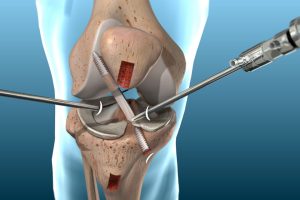Phase 1: Recovery from Surgery
There are 3 main goals to achieve in this Phase.
- Getting the knee straight.
- Settling any swelling (getting it back to “mild’’).
- Getting the quadriceps to fire again.
Following your surgery, it is important to allow your body the chance to recover. The period of rest will differ for each individual but typically you allow the knee to settle for the initial 1-2 weeks.
During which time you complete basic range of motion movements, quadriceps drills as well as using ice and compression to manage swelling and pain.
The movements that you will complete are prescribed by your Physiotherapist and will be adjusted weekly based on how you are progressing.
These movements are incorporated into your overall training program and will allow you to continue your training during your recovery from surgery.
Phase 2: Strength and Neuromuscular Control
There are 3 main goals to achieve in this Phase.
- Regain most of your single leg balance.
- Regain most of your muscle strength.
- Single leg squat with good technique.
Phase 2 is all about regaining muscular strength, balance, and coordination. This generally begins with body weight movements progressing over time to structured gym routines which encompass resistance training, balance exercises and coordination drills.
During this time, with increases in activity the knee will “tell” you how it is coping. Large increases in swelling and pain will indicate that you are doing too much and that the knee isn’t tolerating the workloads. It is important to progress the knee using targets (Key Performance Indicators – KPI’s) for the individual athlete to achieve which can account for maintaining loads, increases or reductions based on how the individual athlete is feeling on the day or throughout the Phase 2 training period.
Exercises within this Phase include Split Squats, Squats, Hamstring Bridging, Calf Raises, Hip and Core Stabilising / strengthening drills, was well as walking, bike riding and swimming for non-impact aerobic activity.
The primary goal is to increase the strength of the individual, with the inclusions of jumping, landing and running set for Phase 3 once set KPI’s have been achieved.




